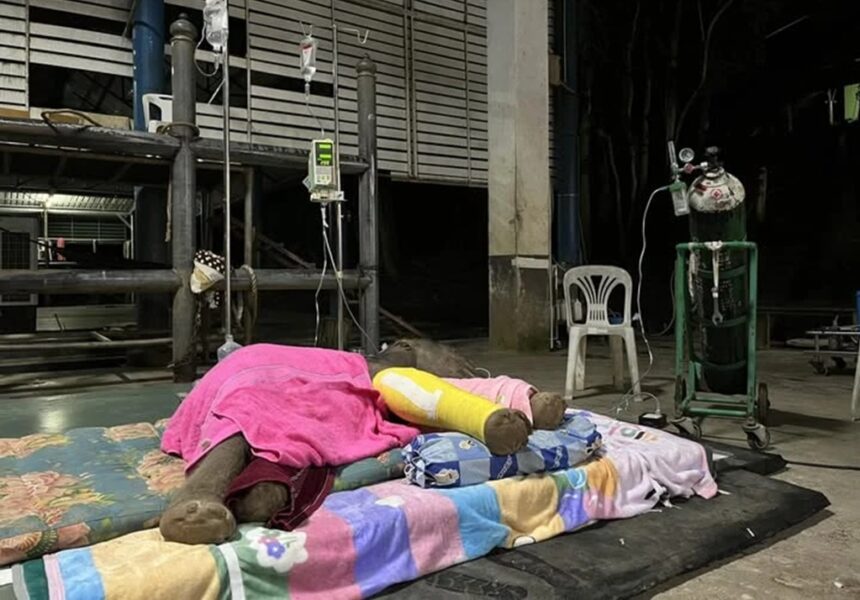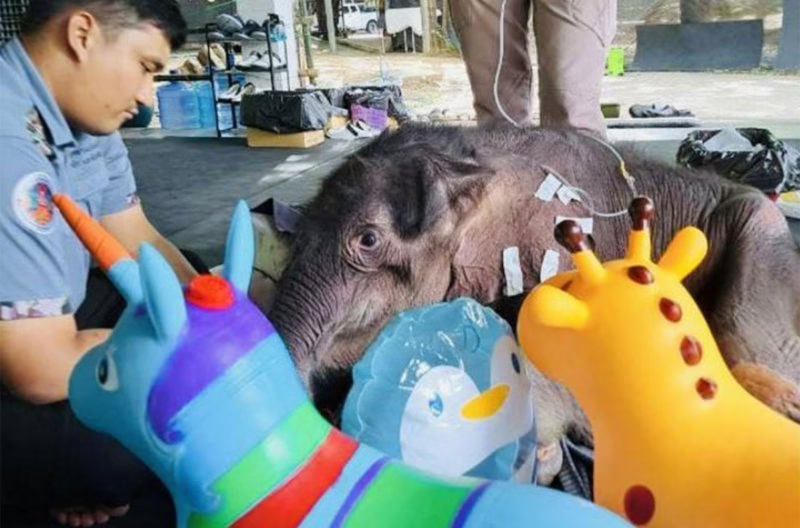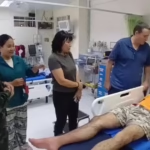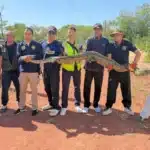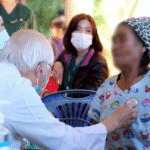LAMPANG – On Wednesday, at the Elephant Hospital in Lampang province, a centre run by the Friends of the Asian Elephant Foundation. Veterinarians there announced the death of an 11-day-old baby elephant, despite round-the-clock care.
She had been rushed from a trekking camp in Chiang Mai after a violent attack by her mother. Stress, captivity, and noise can trigger such rare incidents. The calf suffered a broken hind leg with compound fractures, along with deep cuts and internal bruising from trampling.
She travelled 200 kilometres under sedation for urgent surgery. Dr Thiti La-orngkhun, the chief surgeon, led a team that set the bone with titanium pins and splints, using methods shaped by years of treating injuries from logging and snares.
For two days, staff warmed her, fed milk replacer by tube, and watched every breath. “She fought like a little warrior,” Dr La-orngkhun said. “But at only 45 kilograms, her body could not overcome the trauma. Sepsis took hold overnight.
” She died at dawn, a stark reminder of the risks for captive elephants in Thailand’s tourism sector, where more than 2,500 domesticated animals work in camps under strain that can disrupt herd bonds.
Even as Lampang Elephant Hospital mourned, good news arrived from central Thailand. On Thursday, the Department of National Parks, Wildlife and Plant Conservation (DNP) shared updates from Bueng Chawak Wildlife Sanctuary in Suphan Buri.
There, a wild calf called “Khao Tom”, named after the rice porridge that kept her going, is recovering well. Rangers rescued her on 22 September from a pit in Huai Chani Forest, Kanchanaburi, after she fell and became separated from her herd.
Local villagers raised the alarm. A team from Lam Khlong Ngu National Park lifted her free with a crane and sling.
Injured Baby Elephant Recovering
Care at Bueng Chawak has been steady and careful. Under Dr Natthanon Panpetch and a team from the National Elephant Institute, Chiang Mai University, and Kasetsart University, the baby elephant has gained strength.
Scans showed ligament tears and muscle damage. Physiotherapy, hydrotherapy, and supportive slings rebuilt movement. By Thursday, the baby elephant was walking on her own, testing bamboo with her trunk, and drinking five litres of formula each day.
“Her mobility improves daily. She even play-charges her surrogate keepers,” said DNP Director-General Atthapol Charoenchansa. “Khao Tom’s progress shows what focused care can deliver for the wider wild herd.”
These twin stories highlight Thailand’s wider elephant challenge. The country now has more than 4,000 Asian elephants in the wild, up from about 1,800 in the 1980s, thanks to DNP protection. Gains bring pressure. Forests continue to shrink to farms and towns, about 1.5% each year, which pushes elephants into croplands. In 2024, human-elephant conflict hit 42 provinces.
Nineteen people died, more than 200 were injured, and 594 crop raids were recorded, about a 15% rise from recent years. The Eastern Forest Complex holds roughly 30% of the population and grows by 8.2% each year, a pace that fuels clashes with communities that set flares and put up fencing to keep elephants out.
Elephant Population Management
Wildlife officials are moving ahead with new approaches. In January 2025, the DNP plans trials of porcine zona pellucida, a non-lethal contraceptive already tested on seven domestic elephants. The pilot will focus on 20 fertile females in the east. “This is humane population management, not culling,” said Atthapol.
Each dose is expected to work for about seven years, with monitoring by GPS collars and regular blood tests. The programme sits alongside habitat work: 10,000 rai of forage-rich buffer zones planted this year, electric fencing at 257 high-risk villages, and eco-corridors to link isolated parks. Community support remains central.
The DNP’s “Elephant Harmony” trains local spotters for rapid response, pays compensation for losses, and directs tourism income to anti-poaching patrols. Public forums, including a heated session in Bangkok in January, continue to refine plans and bring in views from affected tambons.
Thailand now faces a choice. The elephant’s call, once tied to monarchy and power, asks for care and shared effort. In Lampang’s quiet ward and Suphan Buri’s lively paddock, the stakes are clear. A national symbol’s future depends on smart action and steady work. Will we act in time to keep forests alive and herds safe? For Khao Tom, stepping into tomorrow, and for the little one lost in Lampang, the answer cannot wait.




